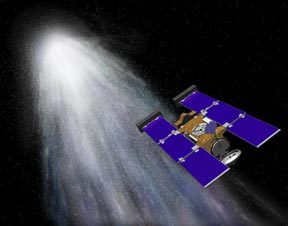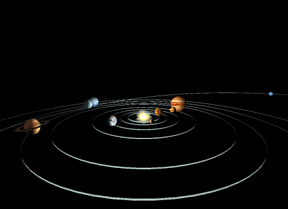STARDUST To Catch A Falling Star And Put It In Its Pocket
News story originally written on February 15, 1999
Actually,
Stardust will catch pieces of a
comet and
return
them to Earth. Scientists
think that comet pieces haven't changed since the
Solar System formed.
They want to study the comet pieces to find out more about the Solar
System.
STARDUST will collect comet pieces in a special material called aerogel.
Aerogel is like glass but is 1000 times lighter!
You might also be interested in:

Stardust is the name of a space mission that studied a comet. Stardust flew very close to the comet in January 2004. It took some very good pictures of the nucleus of the comet. It also grabbed some dust
...more
The solar system is made up of the Sun, the // Call the planets count function defined in the document head print_planet_count('planets'); planets and // Call the planets count function defined in the
...more
Scientists have found a type of amino acid in a sample returned from a comet. Amino acids are the building-blocks of proteins. Proteins are one of the most important types of molecules in living creatures.
...more
It was another exciting and frustrating year for the space science program. It seemed that every step forward led to one backwards. Either way, NASA led the way to a great century of discovery. Unfortunately,
...more
The Space Shuttle Discovery lifted off from Kennedy Space Center on October 29th at 2:19 p.m. EST. The sky was clear and the weather was great. This was the America's 123rd manned space mission. A huge
...more
Scientists found a satellite orbiting the asteroid, Eugenia. This is the second one ever! A special telescope allows scientists to look through Earth's atmosphere. The first satellite found was Dactyl.
...more
The United States wants Russia to put the service module in orbit! The module is part of the International Space Station. It was supposed to be in space over 2 years ago. Russia just sent supplies to the
...more














